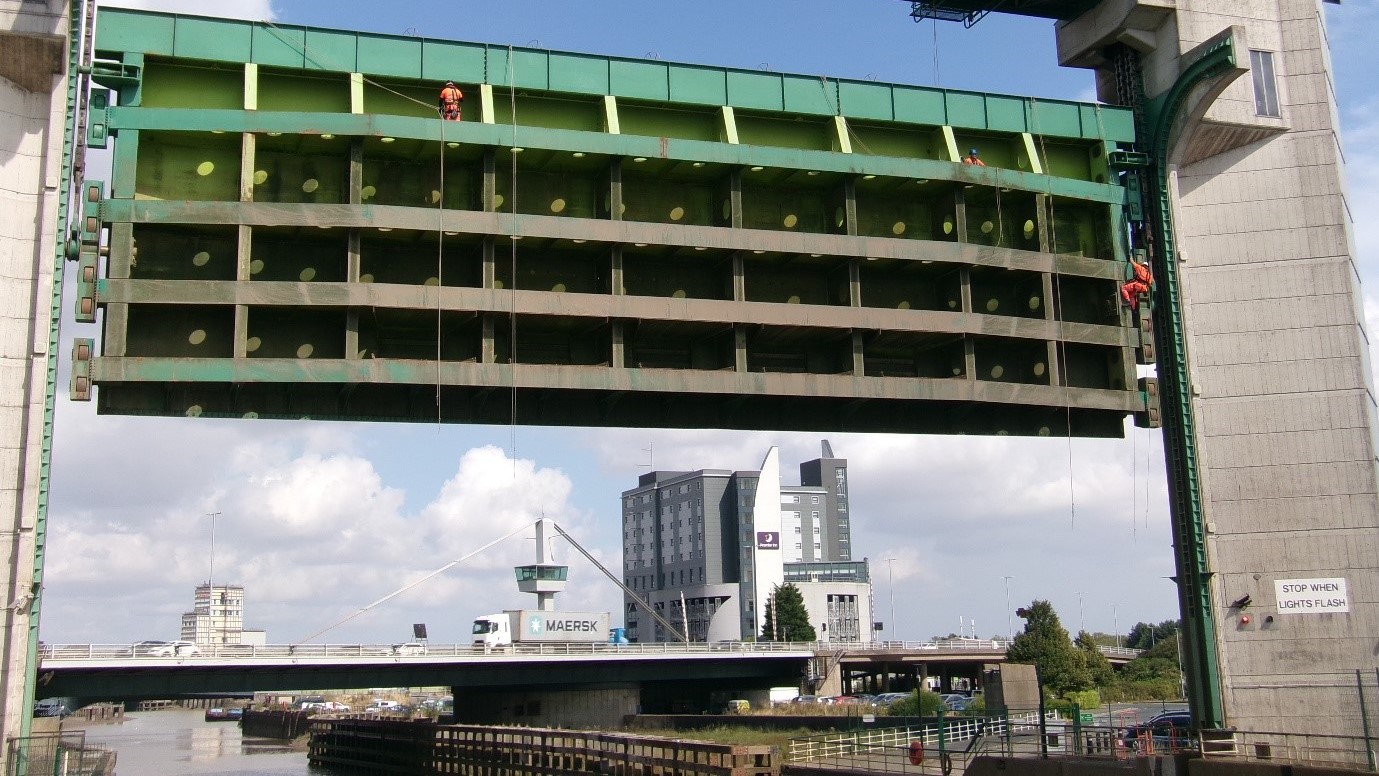
Specialist rope access techniques were used by technicians to access the concrete and steel components of the Grade II listed Hull tidal surge barrier during recent inspection and testing works.
Working at a height of 30m, with the barrier still in operation, construction and civil engineering contractor and RSK Group company CAN carried out tactile surveys and intrusive investigations of the steel and concrete of the tidal surge barrier as part of its work with BAM UK & Ireland and Arup on behalf of the Environment Agency.
These inspections, which took seven weeks, provided vital data to inform the maintenance plan for the structure.
CAN Project Manager Louis Thomas said: “Because the barrier is an active element of critical infrastructure and had to remain operational while work was carried out, non-traditional access methods were used. Industrial rope access and confined space access techniques using specialised rigging in conjunction with mobile elevated work platforms (MEWP) enabled our team to access the barrier without the need for scaffolding. This ensured the barrier could be cleared quickly to enable operation at any time throughout the inspection works – which it did, on three separate occasions.”
The information gathered during this inspection will be used to develop a maintenance schedule to ensure the barrier can continue to operate effectively for the foreseeable future. Louis said: “We inspected the steelwork to the barrier gate at 92 separate locations; within those locations, we carried out more than 260 individual weld or bolt inspections. Concrete cores were taken at 12 separate locations on the towers.”
Fellow RSK Group companies were involved with the concrete and steelwork evaluation. RSK Materials and Structures undertook non-destructive testing on the steelwork gate of the barrier, and Ian Farmer Associates obtained and examined the concrete cores. Most of the core samples were taken using MEWPs, with CAN collecting those that the MEWPs could not reach using industrial rope access techniques.
The Hull tidal barrier is an iconic sight in the city and is used by the Environment Agency to prevent tidal surges from flooding the city. Construction on the barrier began in 1977 after severe flooding in 1969. It officially opened in 1980.
Environment Agency spokesperson Anupriya Prabhuswamy said: “The Hull tidal surge barrier is a hugely important structure to the city of Hull. It protects the city from flooding, and the work that has been done will establish the current condition of the barrier and subsequently inform the plan to maintain this structure so it can continue to provide protection for the future.”



